Parallel Projections
Samantha Krukowski and Peter Goché
Beginning
Parallel Projections investigates and conflates two types of post-industrial site: the architectural and the agricultural. It focuses not on specific places but on specific kinds of places, kinds of spaces: defunct industrial buildings, abandoned urban edifices, and mechanized rural landscapes. These spaces of urban and rural abandonment share surfaces bearing palimpsestic qualities that are compelling grounds for both observation and intervention. The layers within these surfaces describe complex, concealed —if not nearly completely obliterated— histories, sometimes overwritten by ghost texts, always faded by changes in production methods and habits of occupation. In opposition to the idea that these sites should be whitewashed and redrawn, the authors consider them as grounds for new imagery and as repositories for material evidence that deepens, rather than erases, the evidence of their pasts. This new imagery is developed, in part, through the accumulation and projection of phenomena harvested from other post-industrial sites.Parallel Projections is anticipated to be a long-term and multi-located effort. For this first installation, the first component of this extended investigation, raw materials and audio visual recordings were collected from dormant and derelict post-industrial sites in two different states —Iowa and Ohio— and subsequently installed in both their native state and re-situated in the other, in the form of alien topographies. Both the local and (extra)terrestrial interventions were designed to amplify observed and haptic aspects of each environment.
A primary objective of the project is to make visceral and evident our intellectual comprehension of the relationships between materiality, surface, place and history. We act on the conditions of one place by invoking the circumstances of other territories. In doing so, we intensify and extend the scale of location and environment through re-occupation and radical inter-connection. Our relationship to the world beyond shifts through the performance of installing and the experience of the installation, gaining stability and instability simultaneously. The authors, living in different spaces that have both been substantially altered by scalar economic shifts, have adapted the project components to their host contexts.
Projecting Parallels: Emerging Methodologies
Parallel Projections is an effort to redraw surfaces and recast spaces by using images derived from landscapes foreign to the sites that, eventually, receive and are transformed by those images. Iowa freight trains, wind turbines and steaming ethanol plants were transplanted onto exterior building walls in Cincinnati. Ohio buildings under renovation, smoking factory stacks and river ferries were relocated to interior walls in Des Moines, Iowa. It projects spaces into and through one another; establishing and making (projecting) parallels.Shared Surface Histories
Projecting imagery onto buildings, landmarks and other non-screen surfaces is a shared practice among artists whose intentions include disruption, overwriting, remembrance, occupation, relocation and appropriation. Our work aligns with that of artists whose sensibility is geared more towards subtlety than spectacle, and those who are involved with the creation of multi-layered (thick) meaning in contexts that might only be temporarily accessible. We do not identify our efforts with the contemporary practice of large-scale projection mapping onto buildings, scheduled as dramatic public and typically promotional events. Instead, we identify with artists like Shimon Attie, Krzysztof Wodiczko, and Jenny Holzer, who participate in an interrogative design realm that questions the relationships between history and memory, place and identity, documentation and erasure, language and definition. Attie’s early work “The Writing on the Wall” (1992-3) involved the projection of pre-World War II Jewish street life onto the same or nearby addresses in Berlin. Attie used slide projectors to achieve momentary recreations of a forgotten past in the present, and superimposed the dead and the living in a series of provocative and charged scenes. Wodiczko’s “The Europe of Strangers” (2009) reflected on the undocumented people who live and labour in the shadows of monuments; his “Hiroshima” (1999) depicted the long-lasting effects of tragedy. We share with Attie and Wodiczko the desire to overlay the past in/on the present, to share the content of shadow and subject in the provocation of documented sites of labour, inhabitation and loss. Parallel Projections draws out the industrialized remnants of a place by animating it with more contemporary scales of industrial operation that are devastating to the atmosphere. The project is situated in a realm of speculative design and ecological aesthetics where we ask how the body manifests itself in an implied domain that redraws and redresses the collective memory of industrial labour. In “Truisms”(1978-87), Holzer positioned multivalent phrases on billboards and LED screens and redefined these spaces of advertisement by populating them with obtuse language that required public investment to make meaning. While Holzer’s work was text-based, our project shares with hers the desire to rewrite and redraw in environments with assumed roles. Each drawn environment in Parallel Projections is intentionally blurred in an effort to foster latent and unpredictable opportunities specific to the potential reconstruction of such places. We imagine our draughtsmanship as a synthetic construction drawn onto the very fabric of an immediate public context as memorial and murmur of a production-based culture informed by the dialogue between two sets of apparatuses - contemporary industry and post-industry and their consequent episodic and interactive spectacle.From Iowa/Ohio to Ohio/Iowa
The subject matter of the imagery shot in both states focuses on old and new industrial environments that either support urban centres or that are no longer relevant to them, that are visibly integrated into civic or rural fabrics or spatially or psychologically divorced from them. Surfaces and spaces were identified as sites for projection based on a number of factors: a state of disrepair or abandonment; their potential as drawing grounds for the medium of light; evident but not entirely legible historical traces; the quality of embedded detritus that could be incorporated as found, participant imagery; and their standing existence as situated drawings-in-place. In addition, the project is inherently about movement – images in and over time, scenic displacement, temporary apparitions framed in isolated and varied conditions, travel as an embedded act of drawing, disembodied conversations as a means to clarifying spatial perception, design and intentions for mark making, revelation for different (intended and unintended) audiences at times of testing (drafting) and completion (exhibition and documentation.)Essential to the enterprise have been the pickup trucks owned by each of the authors, one with a generator, another with a built-in convertor, both laden with fuel cans, extension cords, laptops, projectors, cables, video cameras and tripods. These rigs are unrecognizable as drawing toolboxes yet fully equipped for alternative forms of draughtsmanship.
Access to the sites for drawing has required the cooperation of people, schedules, the elements, traffic and the law. In Des Moines, one building supported multiple interior projection efforts that transformed specific architectural moments – canopies of beams, voids in walls and floors, piles of debris, forests of pipes. In Cincinnati, multiple buildings yielded surfaces for projection. Some were already heavily marked by the traces of adjacent buildings that had been demolished, others were extended by shiny industrial accretions that heralded their potential future permanence.
Projection 01: Iowa’s Ohio
The primary project site in Iowa was the Pitt Carriage Company Building, located in the flood plain at the base of Capitol Hill and in the heart of the East Side of Des Moines. Built in 1909, it is a rare example of an intact carriage works building, made more distinct because it was constructed and operated by Mabel Pitt, the only woman ever to own a carriage company in the United States. The facility served as carriage factory and warehouse until 1934, when the building changed ownership and became, until 1951, an ostrich hatchery. From 1951-1974, it was used as a warehouse for the Feed Specialties Company. Since then, the building has been vacant. The brick structure has a concrete floor, interior wood and steel columns, an array of steel I-beams, wood girders and remnants of wood flooring. Almost all window openings have been filled with concrete masonry units.The lack of light and the diffuse spatial order makes how one perceives (in) the building interior unpredictable. This unpredictability guided the placement and overlay of video footage from Ohio, which was positioned to evoke multiple spatial and imagistic intersections while offering a sense of a consistent assemblage. The compositional whole produced an embodiment of material atmosphere in the absence of environmental control.
01. Baseline in derelict carriage factory. Iowa’s Ohio; Train and exhaust in derelict carriage factory. Iowa’s Ohio.
The resultant spatial construct might be construed as a type of tomb that contains the material leftovers of our post-industrial culture, animated by light and darkness, and by the smell of time and moisture. This construct is contingent on a depth, a depth which is not dimensional but rather a result of the experience of a matter of dimension, or, put another way, of the way that we and our world become interlaced, and interior and exterior become inseparable. Here the body in space envelops the in-between, the gap between, drawing out worlds by bringing forth our own ability to sense or fathom alien territories and terrains of distinct time and multiplicities. In these moments it is possible to feel the arrangement of lines along trajectories established by various past occupations. The ghosts of these trajectories no longer present combine with denuded structural systems and phantoms from afar; the marks of absent stairs mix with the shadows of joists that have long-since shed their floors, and the helter-skelter configuration of post and columns offer generative powers that are put into motion by the various experimental projections, images cast from another place and time. Dust hangs (looms) between and around us in the form of minute separate particles. Within, we are immobilized by an incessant barely-audible murmur. Each utterance from an occupant/visitor reverberates off the masonry walls creating a voluminous blur. We drown in the material dereliction of this site, infused with its parallel-site… ibis white, ivory lace, antique white, repose grey, accessible beige, reddened earth, canyon clay, cachet cream, ox-blood red, harvester, torchlight, lusty red iron ore. Aroused by the noxious aromas of our time, materials and occupants past and present are illuminated by sunlight emanating from a single overhead window passing through the array of scorched wood floor joists; the smell of burning is no longer present but still sensed.
In this thickened space, formed of developed surfaces, and against this tapestry of clay, mortar and colour we enter history and situate ourselves within a constructed corpse. We find ourselves (consecrated occupants) against a tabernacle of pipework and flying wood joists. Our sensations —longings which are equally acoustic, tactile and imagined— conspire with an unfolding of an alternative fantastical reality. We conjure intimate relationships between patterns of inhabitation, activity and space. Our interventions (both as curators of and as participants in space) are auratic and indexical; a draughtsmanship deployed in an effort to invoke and draw out through the relative movement of projections the worlds of and between here and there.
Projection 02: Ohio’s Iowa
Whereas a singular site and interior volume supported the Des Moines installation, multiple exterior sites supported the work in Cincinnati. The histories of architectural, civic and human abandonment in this Ohio city are most palpable on the city’s many skins, on the eroding and crumbling structural walls that enclose voids in razed edifices. In the ominous blackness of night, buildings absent any illumination. On shiny surfaces that sidle up to those dusted by disrepair we see suggestions of the possibility of industrial rebirth and continuity.The many cycles of prosperity and poverty that have defined Cincinnati are particularly evident in an area just north of the Ohio River. Over-the-Rhine (OTR) retains many of the marks left by shifting fortunes and populations. If in the 1850’s Cincinnati was the fastest growing city in the United States, and by 1880 was considered the ‘Beer Capital of the World’, the First World War dramatically changed the character and community of OTR. Anti-German sentiment not only erased civic evidence of German culture, but also compromised the many German-owned breweries situated in OTR that powered a significant part of the city’s economy. By the end of the 1920s, OTR slid into an economic depression that emptied its buildings, increased crime rates, and incited turf wars and race riots. By the middle of the 20th century most of the 19th century brewery buildings in the district were shuttered.
Almost one hundred years later, significant renovation and revitalization efforts are underway in OTR and its environs. While many buildings have been preserved or are in the process of being renovated, many remain abandoned, uninhabited, even near collapse. The Clyffside Brewing Company is a defunct complex on the north edge of OTR where beer was brewed consistently for 111 years (1846-1957), the longest production run of any brewery in Cincinnati. In 2010, the western wall of one portion of the complex collapsed, forcing the demolition of the oldest brewery building on the site.
02. Baseline of defunct brewery site. Ohio’s Iowa.
The void where this building once stood is one of the Cincinnati projection sites. Elevated above the street intersection —where buses stop but few travellers appear— there is a jumble of spatial, visual and textural information. The two remaining complex walls are interrupted by pipes and wires, supports for inaccessible doors suspended well above ground level, and host to illogical shapes formed by concrete block infill. Peeling white paint is revealing the bricks’ original colour; turquoise subtly frames a steel beam over a sealed aperture. What was once an interior floor is now a ridged and crumbling concrete pad surrounded by barricades and partially submerged in a thin layer of rust coloured water. There are discarded objects everywhere: a refrigerator door, a washing machine, empty liquor bottles, two yellow hairbands.
A second site, the functioning Samuel Adams Cincinnati Brewery, is just a few blocks south and east of the abandoned Clyffside Brewing Company. It provides a stark material and experiential contrast to its defunct 19th century relative. Lengths of beige planar geometries and bundled, repetitive stainless cylinders surround and absorb the architecture that once supported the Hudepohl-Schoenling Brewery that originally occupied a portion of this sprawling, indifferent domain. Whereas the Clyffside complex is embedded on a hill and integrated into a residential district, the Samuel Adams complex occupies ten square blocks in opposition to its surroundings. At night, both sites breathe emptiness: neither are inhabited; people and vehicles appear only intermittently. In these dark voids, isolation modulates breathing, and unease sharpens glances down streets littered with architecture left to weather in time, untended. The air is still filled with yeast and oil smoke, and the river continues its passage below, out of sight. Lost plastic wafts across gated passages, glass shatters under heavy footsteps and truck tires. Stagnant water reflects ivy crawling and consuming structures already buckling under other forms of pressure. The envelopes that distinguish us from our surroundings fall away as the light and images of a projection turn the place where we are into another place entirely. In these moments we are transported into the compressed overlay of past and present, with here and there asserting their infinite malleability.
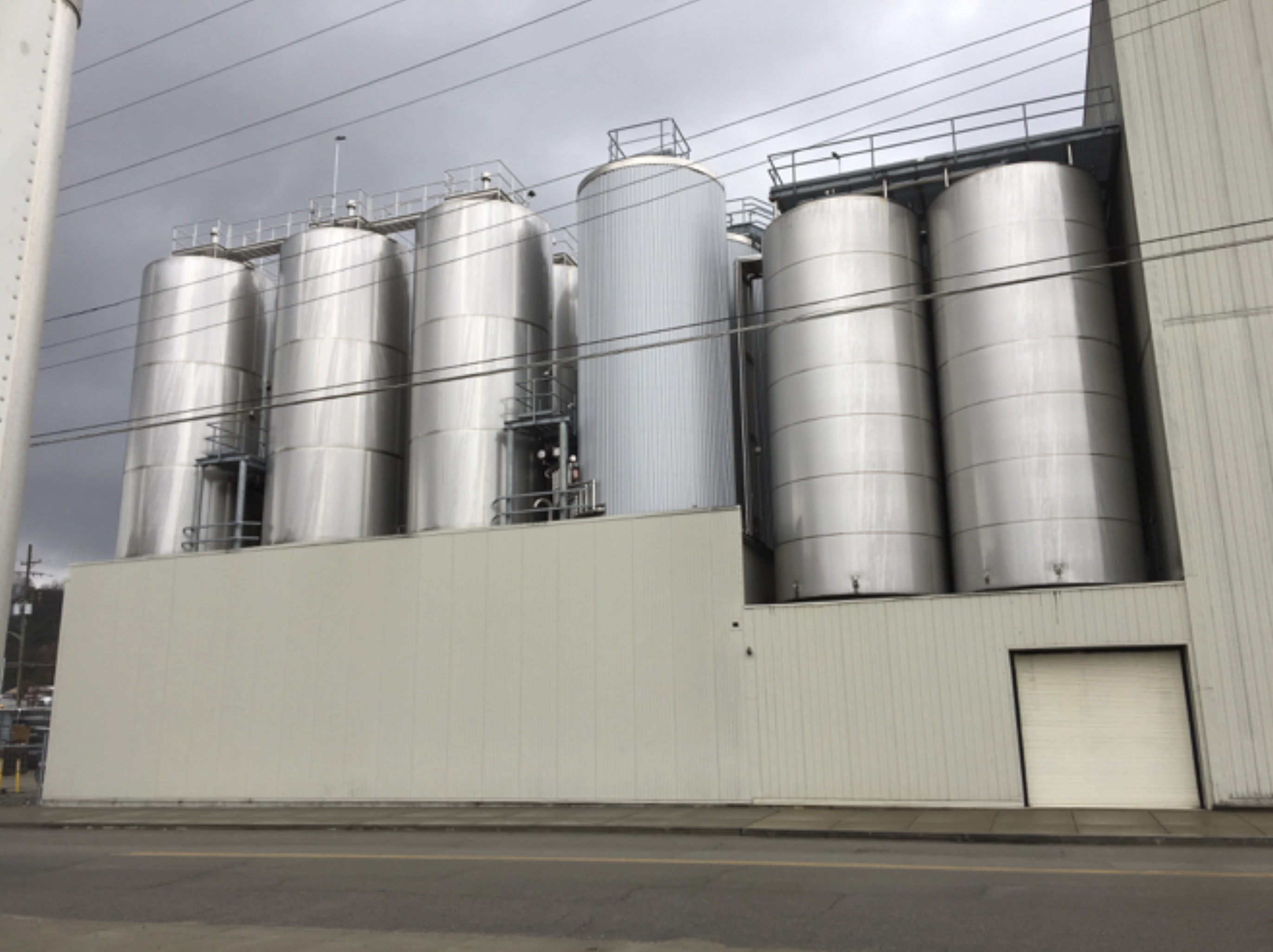
03. Baseline of Samuel Adams Cincinnati Brewery site. Ohio’s Iowa.
Unlike interior projections, these compressions of image and structure carried out in open public spaces invited public attention. As the moving images shifted the identity and perception of the surfaces with which they joined, ambling silhouettes remaining at a distance resolved into people who announced themselves with requests for work, for money, for the use of a cell phone. Chance encounters became an additional experiential layer of the work. Unanticipated conversations, interruptions, even cars that drove through the projections became part of the meta-record.
Parallel Projections
Parallel Projections deploys an extra-terrestrial methodology to develop alternative forms of draughtsmanship. Using non-conventional means of drafting, the works in this developing project might best be understood as experimental choreographies that yield new drawing types and cartographic transects. The Iowa and Ohio post-industrial environments are usually perceived in passing if at all, or are made invisible by redevelopment. Establishing a programmed choreography through these spaces is a means to discern them. Though the line we are drawing is not straight or defined by distance, we see each projection as an embodied methodology by which we draw out the effective nature of the past to assist in the provocation of a new realm of history.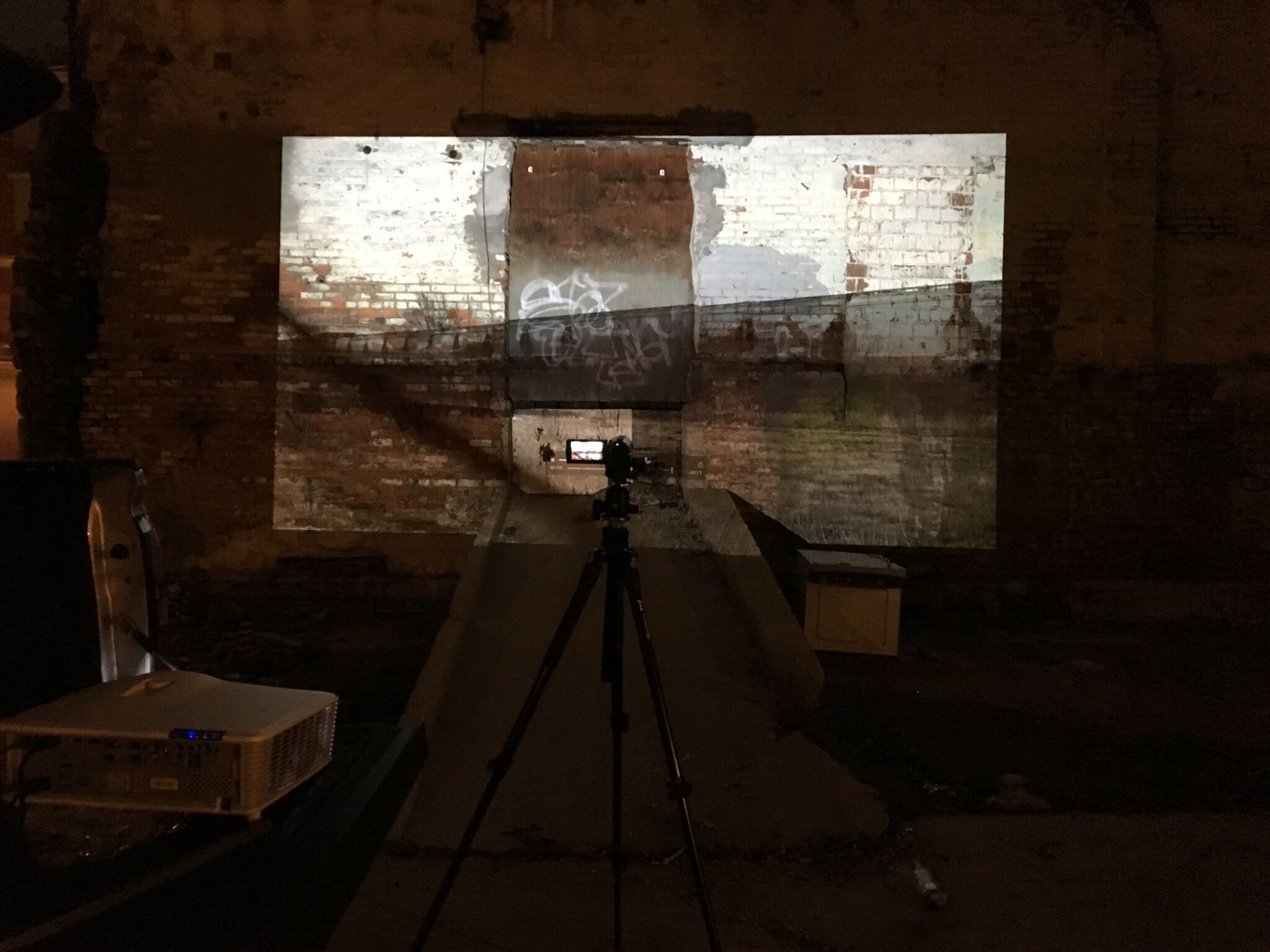
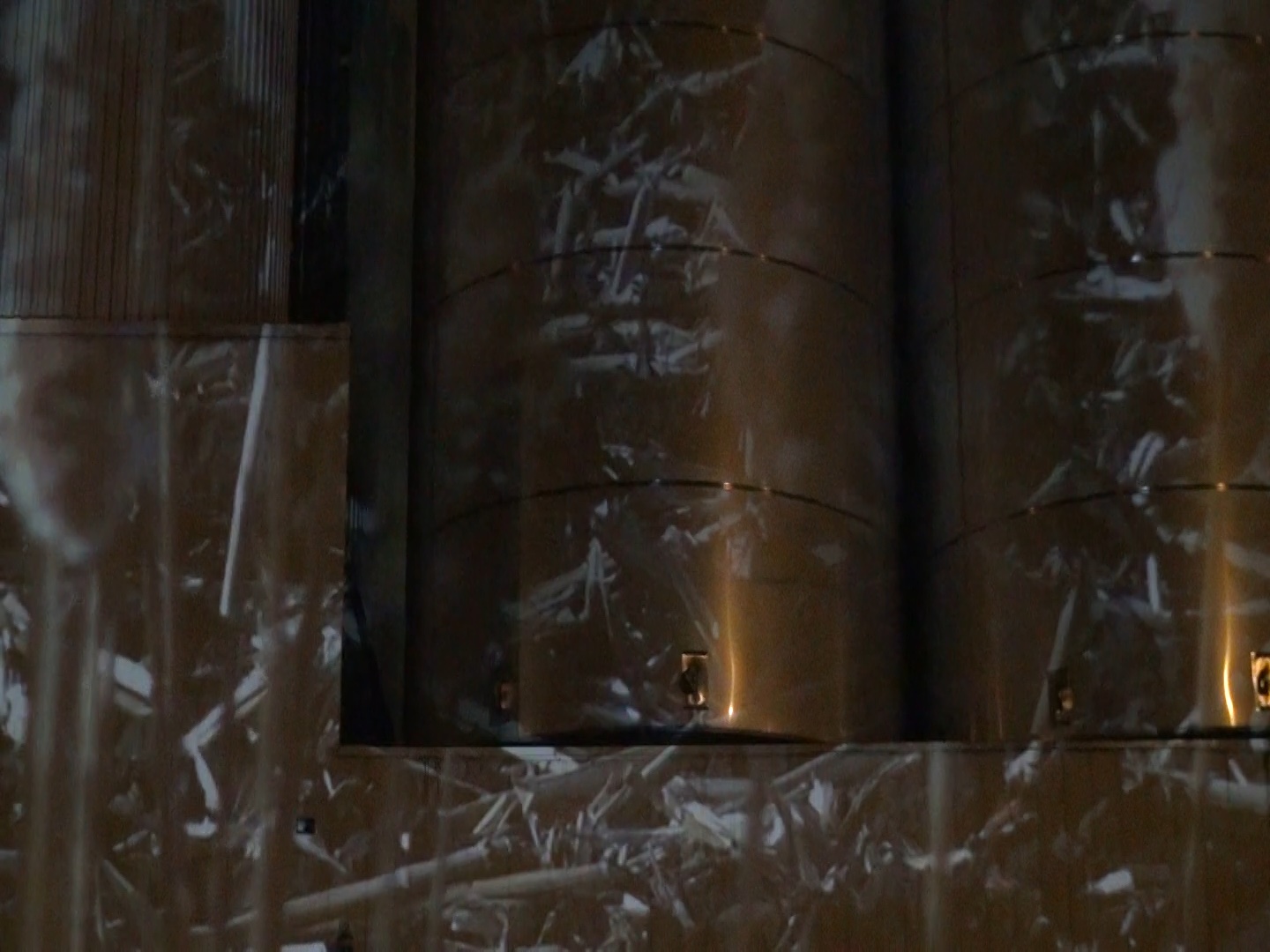
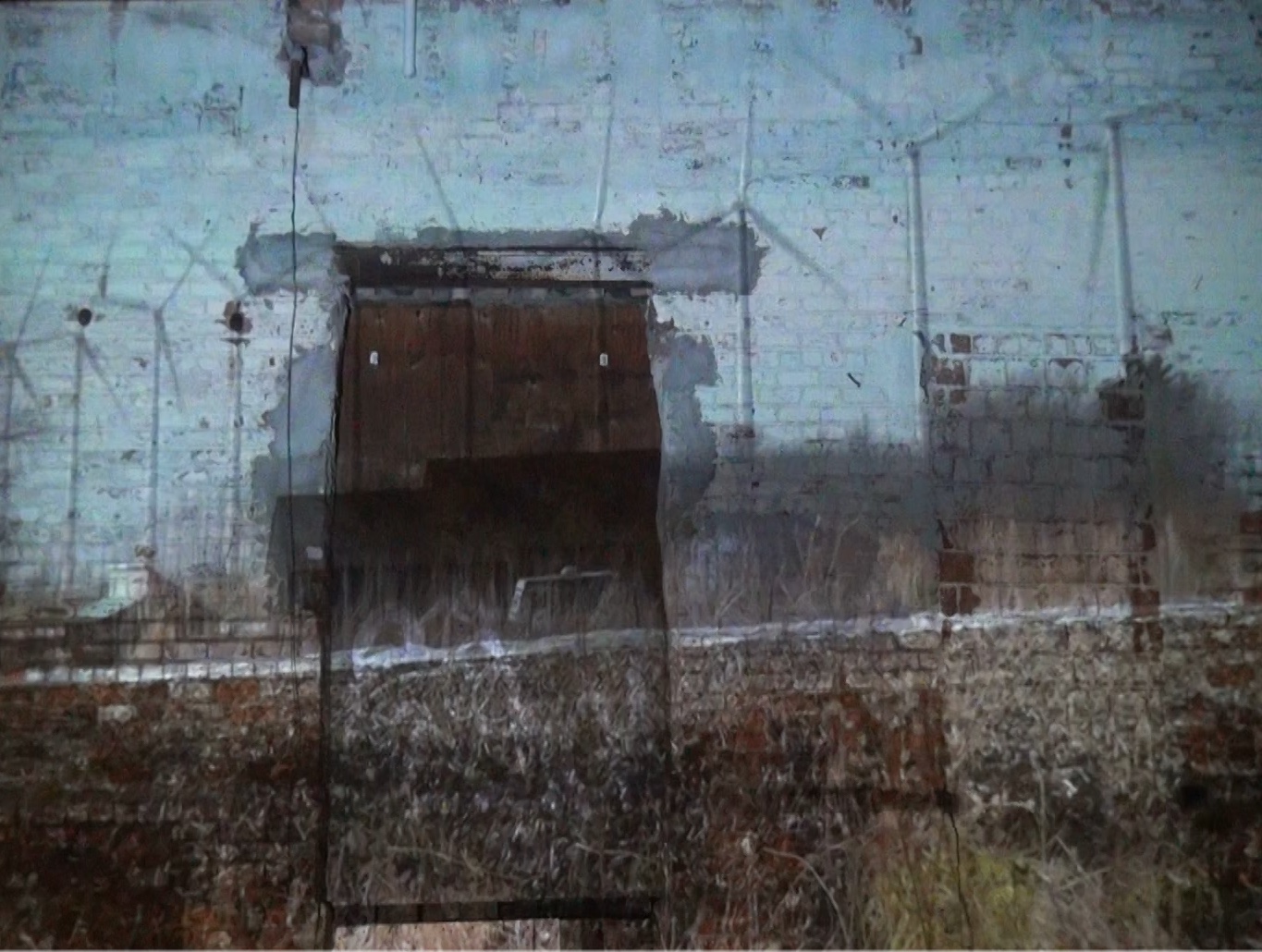
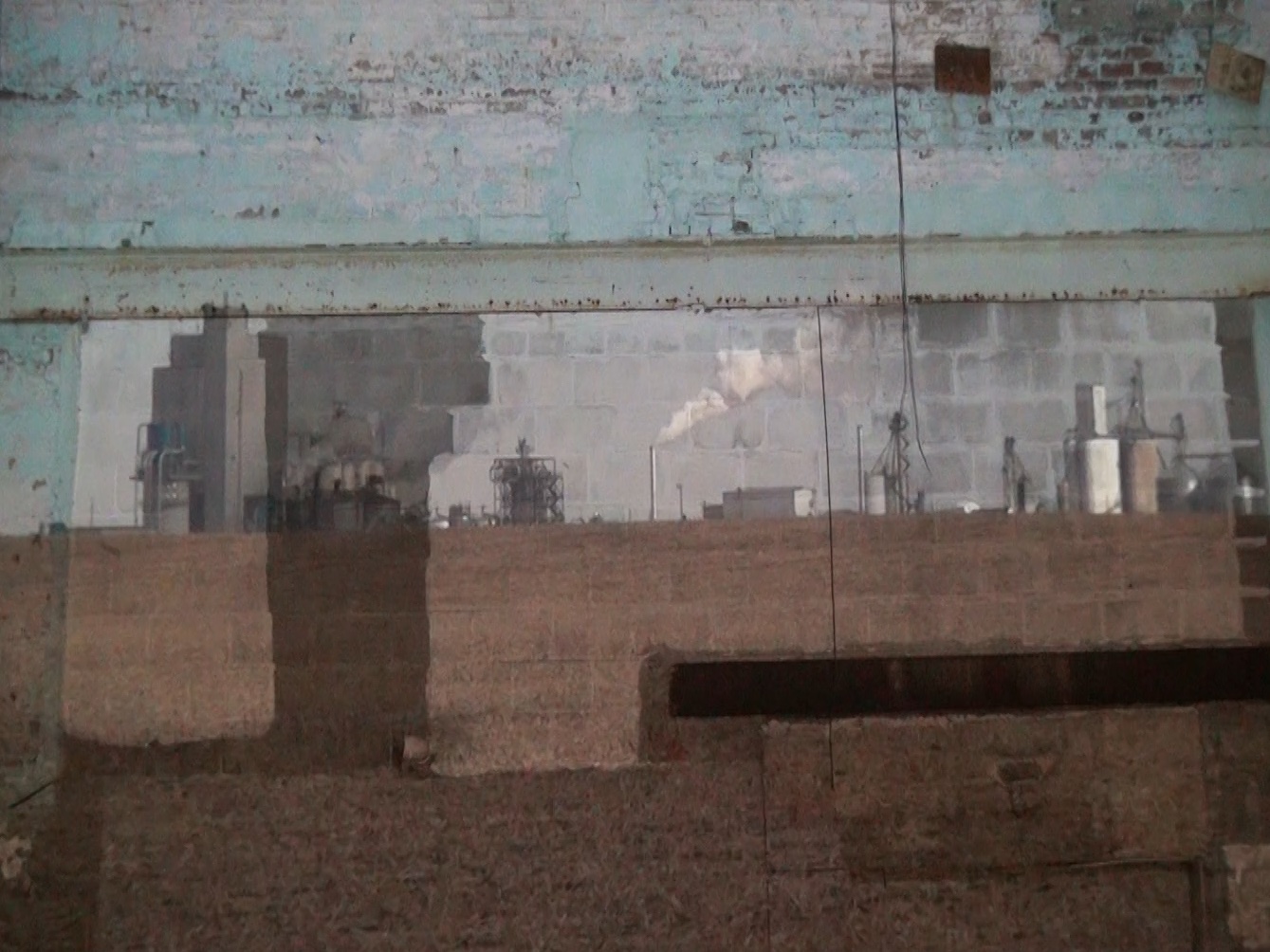
04. Setting up, defunct brewery site; Field grasses, Samuel Adams Cincinnati Brewery; Wind turbines, defunct brewery site; Ethanol plant, defunct brewery site. Ohio’s Iowa.
Geographic surveys often face their most awkward, difficult moments during the initial phase of cultural adjustment, where we are suddenly confronted with an alterity of new terrains, new environments, new material languages, and new social norms. Parallel Projections has begun to provide a structured (albeit strangely structured) logic with which to engage the post-industrial forms and landscapes of the American Midwest, and to seek out and explore some of its most challenging districts. We will continue to explore and debate the project’s critical significance, and extend it. Is it a dérive? Do the experiential projections constitute a ‘map’ themselves? To what extent do the obsessively recorded and projected videos represent an industrial past and present when combined with defunct industrial settings and material constructs? One thing we can assert is that atmospheres are physical. They are experienced by the body in time, and affected by our responses to and redefinition of their experience. Our experiment wanders in an atmospheric amalgam pierced by the passing of a train or the stillness of a layered surface that supports an exhaust emanating from a distant industrial plant. The body, implicated by occupation in this situation, becomes the canvas onto and into which the course of such conflated histories can be redrawn.
Published 16th July, 2018.
Banner.
Plastic and scaffold in derelict carriage factory. Iowa’s Ohio. Photograph by the authors.
Plastic and scaffold in derelict carriage factory. Iowa’s Ohio. Photograph by the authors.
01.
Baseline in derelict carriage factory. Iowa’s Ohio; Train and exhaust in derelict carriage factory. Iowa’s Ohio. Photographs by the authors.
02.
Baseline of defunct brewery site. Ohio’s Iowa. Photograph by the authors.
Baseline in derelict carriage factory. Iowa’s Ohio; Train and exhaust in derelict carriage factory. Iowa’s Ohio. Photographs by the authors.
02.
Baseline of defunct brewery site. Ohio’s Iowa. Photograph by the authors.
03.
Baseline of Samuel Adams Cincinnati Brewery site. Ohio’s Iowa. Photograph by the authors.
Baseline of Samuel Adams Cincinnati Brewery site. Ohio’s Iowa. Photograph by the authors.
04.
Setting up, defunct brewery site; Field grasses, Samuel Adams Cincinnati Brewery; Wind turbines, defunct brewery site; Ethanol plant, defunct brewery site. Ohio’s Iowa.
Setting up, defunct brewery site; Field grasses, Samuel Adams Cincinnati Brewery; Wind turbines, defunct brewery site; Ethanol plant, defunct brewery site. Ohio’s Iowa.
